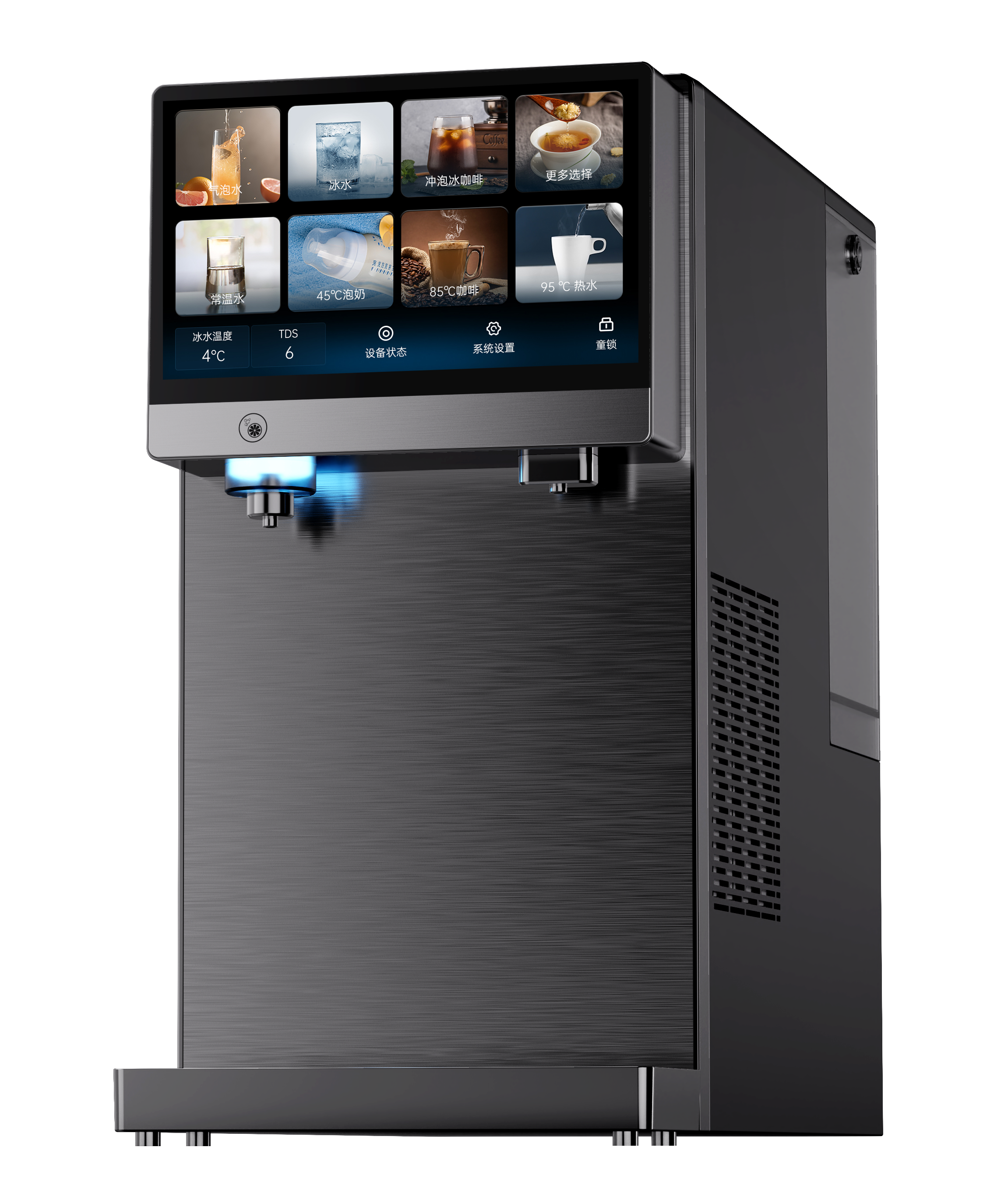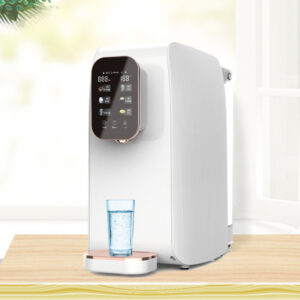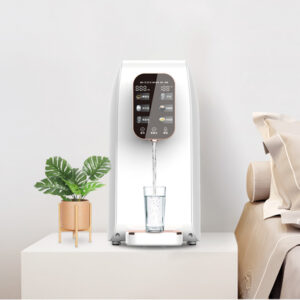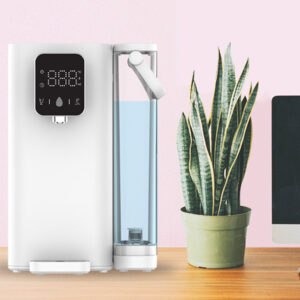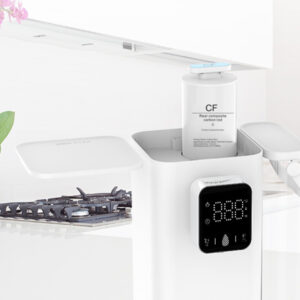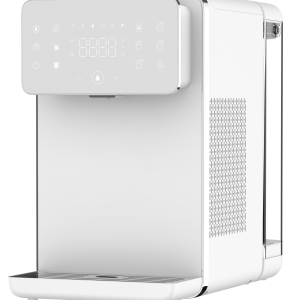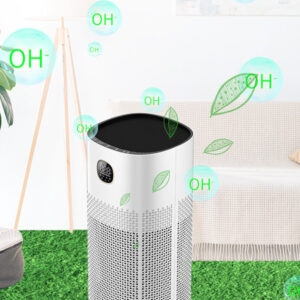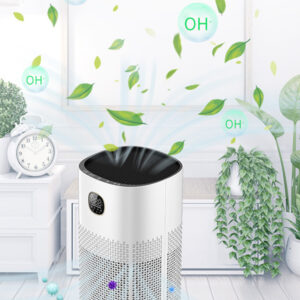Quality Control Process at OLANSI Sparkling Water Maker Factory
The sparkling water industry has experienced significant growth in recent years, with consumers increasingly opting for healthier beverage options. As a result, manufacturers are under pressure to produce high-quality products that meet regulatory requirements and customer expectations. Quality control plays a critical role in ensuring the safety, consistency, and satisfaction of customers.
In this article, we will explore the importance of quality control in sparkling water production, the key elements of the quality control process, and the benefits and challenges of maintaining quality control.
The Importance of Quality Control in Sparkling Water Production
Quality control is essential in sparkling water production to ensure safety and consistency. Manufacturers must adhere to strict regulatory requirements to ensure that their products are safe for consumption. Quality control also helps to maintain consistency in the taste, texture, and appearance of the product, which is critical for customer satisfaction. Without quality control, manufacturers risk producing substandard products that could harm consumers and damage their brand reputation.
Meeting regulatory requirements is another critical aspect of quality control in sparkling water production. Manufacturers must comply with local and international regulations to ensure that their products are safe for consumption. Failure to comply with these regulations could result in legal action, fines, and damage to the brand’s reputation.
Maintaining customer satisfaction is also a critical aspect of quality control in sparkling water production. Customers expect high-quality products that meet their expectations. If a product does not meet their expectations, they are likely to switch to a competitor’s product. Quality control helps to ensure that the product meets customer expectations, which is essential for customer satisfaction and loyalty.
The Role of Quality Control in Ensuring Customer Satisfaction
Meeting customer expectations is a critical aspect of quality control in sparkling water production. Customers expect high-quality products that meet their expectations. If a product does not meet their expectations, they are likely to switch to a competitor’s product. Quality control helps to ensure that the product meets customer expectations, which is essential for customer satisfaction and loyalty.
The impact of quality control on brand reputation cannot be overstated. A single incident of substandard product quality can damage a brand’s reputation and result in lost sales. Customers are more likely to trust brands that have a reputation for producing high-quality products consistently. Quality control helps to ensure that the product meets customer expectations, which is essential for maintaining brand reputation.
Examples of customer complaints due to lack of quality control include off-taste, flatness, and inconsistency in the product. These complaints can damage a brand’s reputation and result in lost sales. Quality control helps to prevent these issues by ensuring that the product meets customer expectations consistently.
The Key Elements of OLANSI Sparkling Water Maker Factory Quality Control Process
The quality control process in sparkling water production involves several key elements, including raw material inspection, production line monitoring, finished product testing, and packaging and labeling checks.
Raw material inspection involves checking the quality of the raw materials used in the production process. This includes checking for impurities, contaminants, and other defects that could affect the quality of the final product.
Production line monitoring involves monitoring the production process to ensure that it is running smoothly and efficiently. This includes checking for any equipment malfunctions, monitoring the temperature and pressure of the water, and ensuring that the carbonation process is working correctly.
Finished product testing involves testing the final product to ensure that it meets regulatory requirements and customer expectations. This includes testing for taste, texture, and appearance, as well as checking for any impurities or contaminants.
Packaging and labeling checks involve checking the packaging and labeling of the product to ensure that it meets regulatory requirements and customer expectations. This includes checking for any defects in the packaging, ensuring that the labeling is accurate and complete, and checking for any discrepancies between the product and the labeling.
The Quality Control Team: Roles and Responsibilities
The quality control team in a sparkling water production facility includes a quality control manager, quality control technicians, and production line workers. The quality control manager is responsible for overseeing the quality control process and ensuring that it meets regulatory requirements and customer expectations. Quality control technicians are responsible for conducting tests and inspections to ensure that the product meets quality standards. Production line workers are responsible for ensuring that the production process runs smoothly and efficiently.
Collaboration between teams is critical in ensuring that the quality control process is effective. The quality control team must work closely with the production team to ensure that the production process meets quality standards. The quality control team must also work closely with the marketing team to ensure that the product meets customer expectations.
The Tools and Techniques Used in Sparkling Water Maker Factory Quality Control
The quality control process in sparkling water production involves several tools and techniques, including laboratory equipment, statistical process control, quality control software, and employee training and development.
Laboratory equipment is used to test the quality of the raw materials and the finished product. This includes equipment for testing the pH, dissolved oxygen, and carbon dioxide levels in the water.
Statistical process control is used to monitor the production process and identify any trends or patterns that could affect the quality of the final product. This involves collecting data on the production process and analyzing it to identify any areas where improvements can be made.
Quality control software is used to manage the quality control process and ensure that it meets regulatory requirements and customer expectations. This includes software for tracking the production process, managing test results, and generating reports.
Employee training and development are critical in ensuring that the quality control process is effective. This includes training employees on the quality control process, providing ongoing training and development opportunities, and ensuring that employees are aware of their roles and responsibilities.
Continuous Improvement: The Future of Sparkling Water Maker Factory Quality Control
Continuous improvement is the future of sparkling water maker factory quality control. Manufacturers must continually evaluate and improve their quality control processes to ensure that they meet regulatory requirements and customer expectations.
Implementation of new technologies and techniques is critical in continuous improvement. Manufacturers must stay up-to-date with the latest technologies and techniques to ensure that their quality control processes are effective.
Collaboration with suppliers and customers is also critical in continuous improvement. Manufacturers must work closely with their suppliers to ensure that they are providing high-quality raw materials. They must also work closely with their customers to understand their needs and expectations.
Final Verdict
In conclusion, quality control is critical in sparkling water production to ensure safety, consistency, and customer satisfaction. The quality control process involves several key elements, including raw material inspection, production line monitoring, finished product testing, and packaging and labeling checks. The benefits of a robust quality control process include improved product quality, increased efficiency and productivity, reduced waste and costs, and enhanced customer satisfaction and loyalty


